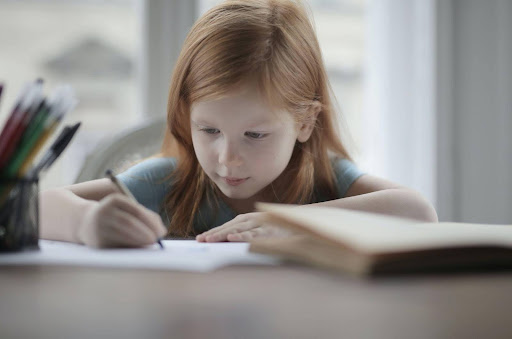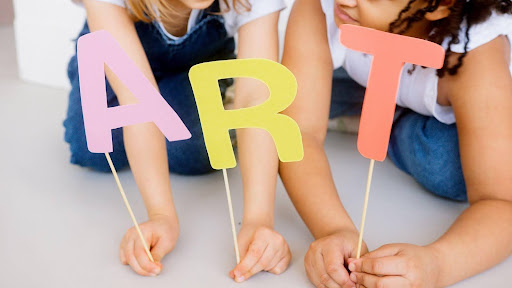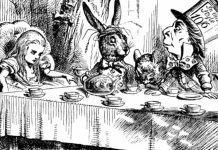Art is about expressing your individuality, but when people pool their talents, they can create something quite remarkable. The employment of various methodologies, approaches, art techniques, and technologies in contemporary art education is essential. Learners discover and convey ideas through the arts by connecting their intellect, imagination, senses, and feelings to produce works and respond to the works of others. This collection certainly has something for everyone, whether you enjoy painting, sculpture, doodling, or mosaics. Some art projects integrate nature, while others are chaotic enough to require some time outside. These collaborative art projects are suitable for children, teenagers, and adults alike, and produce outcomes that everyone can be proud of. Art programs are an important part of a well-rounded education because they allow students to express themselves creatively and personally. It is critical to include a variety of exciting art class activities to keep students involved and inspired.
Still Life Drawing:
Students will learn the classic method of drawing, on toned paper with charcoal or black pencil, heightened with white. Set up still life settings to introduce students to the basics of drawing. This project encourages students to examine and capture object features, refining their observational skills and developing their drawing techniques.

Clay Sculptures:
Everyone remembers playing with play dough as a child. However, you should definitely upgrade to a different type of modeling clay at some point. Allow kids to participate in the tactile experience of working with clay. This lesson allows students to explore three-dimensional art forms and expand their awareness of shape and texture, ranging from pinch pots to elaborate sculptures.
Collage Art:
There are numerous reasons to like collage art, ranging from the flexibility it provides to the dramatic stories that can be communicated via it. Students can combine personal objects with traditional resources to make something new and significant. Create collages that encourage kids to experiment with different materials and textures. This practice encourages creativity and gives pupils the opportunity to express themselves through mixed media works.
Printmaking:
Fine art printing is the process of creating a master plate from which many images are created. Train students printmaking skills such as linocut and monoprinting. This project allows kids to experiment and be creative by allowing them to investigate the process of transferring images into paper.
Photography:
This project is appropriate for students of all skill levels and will teach them how to further their interest in photography and image manipulation. The course will provide students with additional knowledge and skills, allowing them to construct their own portfolios and, ultimately, increase their enjoyment of painting. Introduce students to photography by teaching them basic concepts including composition, lighting, and framing. This game enables students to take a new look at them and capture remarkable moments.
Mural Painting:
Mural paintings are sought after by communities such as local governments, schools, and parks to enrich and beautify public and private spaces, as well as to combat blight and graffiti. Murals are used by public and commercial institutions to mark their visual logos and promote specific messages on their public places. Create a mural to engage students in a collaborative activity. This project fosters teamwork, communication, and problem-solving abilities while allowing kids to produce large-scale artwork that enhances the classroom atmosphere.
Digital Art:
Creativity should always be at the forefront, but technology may play an important supporting role. Allowing your kids to explore both their artistic and technological sides can open up a whole new universe of possibilities. Implement modern technology by teaching students digital art methods with tools such as Adobe Photoshop or Illustrator. Students can experiment with digital painting, graphic design, and photo modification in this project.
Paper Mache:
Paper mache is a low-cost craft that may be done with groups of youngsters to create extremely spectacular art projects. When dry, paper mache is surprisingly robust and resilient, and the options for what you can do with it are limitless. It is customary to use recycled paper when making paper mache art for children, but you can use any paper you have on hand. When making your mache mixture, you can use either glue and water or flour and water.Sculpting with paper mache encourages resourcefulness and creativity by teaching students how to build armatures and overlay paper strips to produce unique and expressive artworks.
Paint by Numbers:
Paint by numbers is an excellent exercise to include in art classes since it provides an organized yet entertaining approach to painting. Students participate in this exercise by using a pre-printed canvas with numbered portions that correspond to various paint colors. Students can easily produce magnificent paintings while learning about color mixing, brush methods, and composition by following the numbered parts. Overall, this exercise provides students with a fun and accessible opportunity to express themselves artistically while also enjoying the process of creating beautiful paintings.
Fiber Arts:
Give each student a little piece of fabric and have them write something kind on it. It could be about them, their class, their friends, or their family. You can choose whether to share or keep their words secret. Students will construct a fiber art creation using yarn, string, and/or fabric as the major mediums, as well as a weaving, knitting, crochet technique of their choice. Other non-fiber materials, such as craft objects, may be used in the project. Students can experiment with different materials and textures while creating elaborate and tactile artworks in this activity.
Art History Exploration:
A childhood filled with art exploration is not only enjoyable, but it can also help with emotional and academic growth. Exploring the historical context of art allows children to connect art with the real people who created it, the area of the world they lived in, and the time period they existed in. Set aside time in class to examine and debate various art movements and artists throughout history. This project encourages critical thinking and cultural appreciation by engaging students to produce artwork inspired by various artistic forms.
Outdoor Sketching:
Outdoor art activities allow children to explore their environment, express their imaginations, and improve their artistic talents in a fun and creative way. There are endless ways for youngsters to engage in outdoor art projects, whether it’s painting with nature, crafting sculptures out of discarded materials, or creating sidewalk chalk masterpieces. Encourage kids to sketch landscapes, architecture, or natural objects in art sessions held outside. This project encourages students to connect with their surroundings, examine their surroundings, and record the beauty of their surroundings on paper.
Ceramic Painting:
Ceramic painting in a school art class is a one-of-a-kind, tactile experience that combines artistic expression with the appeal of three-dimensional art. Students paint pre-fired ceramic items, such as plates, mugs, or figures, using unique glazes in this exercise. It allows students to experiment with color theory and practice their painting techniques on a one-of-a-kind and functional canvas.
Found Object Sculpture:
Students should be challenged to build sculptures out of discovered things and recyclable materials. As a school art class exercise, found object sculpture is an ingenious and environmentally friendly approach to engage kids in creative thinking and resourcefulness. Learners develop a deeper understanding for the environment and the importance of sustainability by repurposing discarded things into art, all while expressing their artistic expression in a practical and tactile way.
Live Model Drawing:
Drawing from observation will assist strengthen abilities, boost confidence in visual imagery interpretation, and diversify portfolios for applications to further study. Invite a live model to pose for students to practice sketching figures. This project helps students to practice anatomy, proportion, and gesture while also capturing the unique characteristics of the human form.
Art Exhibition:
An art show is a collection of artwork created by students, teachers, and, in some cases, parents. Paintings, sculptures, posters, murals, pictures, pencil sketches, mixed media, drawings, or anything else related to art that is not a dance or theater production may be on show. Individuals, small groups, or entire classes or grade levels can build them. Plan an art exhibition within the school to highlight the work of youths. This activity allows children to showcase their creativity, building their confidence and instilling pride in their artistic abilities.
Not long ago, arts education in schools was considered a luxury, and arts classes were dropped from the curriculum to make space for more time to study for standardized examinations. There is an increasing body of evidence demonstrating the importance of arts integration in developing well-rounded, well-prepared learners and leaders. The love of art education is merely one of its many benefits for children. By integrating a varied range of art class activities, instructors encourage children to unlock their creative potential, enhance their artistic talents, and cultivate a lifetime love of the arts. Including these dynamic art class activities from still life drawing to custom paint by numbers & printmaking, photography to mural painting in a vibrant and exciting learning environment that develops students’ creativity, fosters critical thinking, and encourages artistic discovery provides a unique opportunity for self-expression, skill development, and personal growth. Art programs can inspire children to think outside the box, try new techniques, and build a lifelong love of the arts by giving a varied range of experiences.






